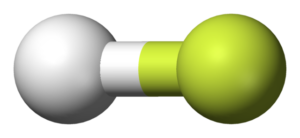Playlist
Show Playlist
Hide Playlist
Induction and Resonance – Electronegativity
-
Slides 05 Chemistry Basics Le Gresley.pdf
-
Download Lecture Overview
00:00 Right. In terms of nomenclature, we talked about positive and negative inductive effects. In the case of mesomeric effects, the term given is M for mesomeric and positive means putting electrons in. So what that means is any group with a negative charge or a lone pair of electrons. 00:24 Here we have some examples of those. I will go into some of the lower examples a little later on when we start looking at functional-group chemistry. But, for the moment, content yourselves with the awareness that chlorine, bromine and also OH groups can contribute a lone pair of electrons. 00:43 The nomenclature for mesomeric – which are withdrawing electrons – is shown here, where Y is more electronegative than X. So, in this case, M for mesomeric, negative for pulling electrons away again. 01:02 Here we have a few examples. I’m just going to draw your attention to one of them which is nitro or NO2, one of the more electronegative species and also capable of stabilising the negative charge. 01:20 Combinations of mesomeric and inductive effects: sometimes you can get both, either acting in concert or acting against each other. And as we’ll see when we look electrophilic aromatic substitution, you’ll be able to observe that one tends to transcend the other. 01:37 Some functional groups have one type of inductive effect but the opposite resonance or mesomeric effect. And here we have an example. 01:47 If we take the aromatic compound phenol, which is shown there as the benzene ring with an OH group attached. We’ve already established that, from an inductive perspective, oxygen being more electronegative can pull electron density away. This will give it a negative inductive effect, remembering of course that minus (-) means electrons being pulled away and ‘I’ meaning inductive. On the other hand, in terms of stabilising a positive charge on the oxygen, it has a mesomeric effect. It actually has a better resonance stability effect than it has an inductive effect. And this is one of the reasons why it’s so easy to react phenols with electrophiles as we’ll see a little later on.
About the Lecture
The lecture Induction and Resonance – Electronegativity by Adam Le Gresley, PhD is from the course Chemistry: Introduction.
Included Quiz Questions
What is a group that donates an electron pair in a resonance structure?
- -Cl
- -CN
- -NO2
- -COOH
- -CHO
Customer reviews
5,0 of 5 stars
| 5 Stars |
|
5 |
| 4 Stars |
|
0 |
| 3 Stars |
|
0 |
| 2 Stars |
|
0 |
| 1 Star |
|
0 |




